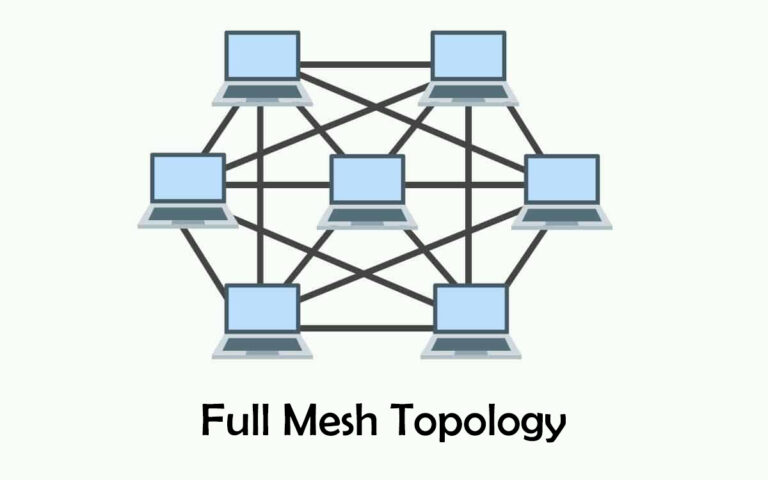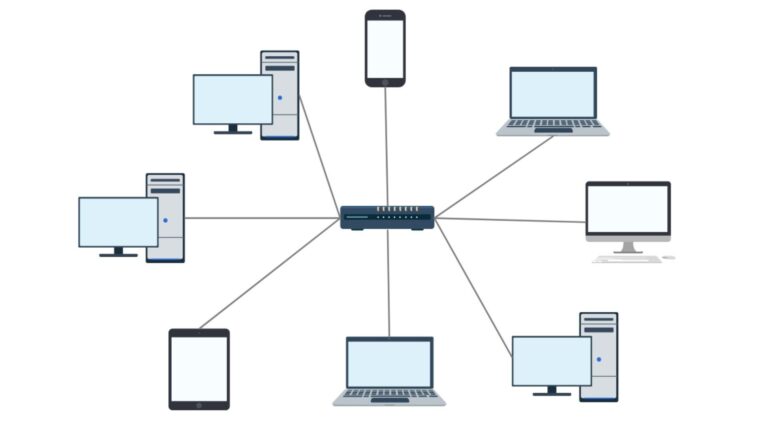Bus Topology: Exploring the Backbone of Network Connectivity
In the vast and complex networking topologies, the bus topology stands out as a foundational structure that forms the basis of interconnected communication systems. This topology involves a single cable or bus that connects all the devices in a network, allowing them to transmit and receive data to and from each other. By grasping the intricacies and applications of this topology, one can unlock the very essence of modern networking and gain a deeper understanding of how communication systems work.
Understanding Bus Topology
Definition of Bus Topology
A bus topology is a type of network arranged linearly, where all devices are connected to a single communication line, known as the bus. This type of topology is known for its simplicity in design and functionality, making it an excellent choice for networks that require seamless data transmission across interconnected nodes.
The bus topology allows for easy network expansion and maintenance, as new devices can be easily added by simply installing a new connection to the main bus. Additionally, the bus topology is highly reliable, as any node can communicate with any other node on the network, and if one device fails, the rest of the network can still function normally.
Historical Context and Evolution
During the early days of computer networking, bus topology emerged as a fundamental architecture that was widely implemented in local area networks (LANs). Despite the evolution of networking technology over time, this architecture has remained relevant due to its versatility and ease of implementation. It continues to be a reliable and efficient option for network design.
Components of Bus Topology
Bus Cable
The bus cable is a vital component in data transmission due to its linear structure. It serves as the primary conduit for data transmission, facilitating the flow of information across the network. Typically composed of coaxial or twisted pair cables, the physical makeup of the bus cable plays a crucial role in ensuring seamless and uninterrupted data transmission.
Transmission Modes
Bus topology is a network architecture that provides different modes of transmission, such as simplex, half-duplex, and full-duplex. These modes enable unidirectional or bidirectional communication between nodes, depending on the specific requirements of the network. This versatility allows for efficient utilization of network resources, ensuring optimal performance and reliability.
Terminator
Terminators play a crucial role in maintaining the smooth functioning of a bus network. As the name suggests, they act as endpoints, preventing signal reflections that could lead to data collisions and network disruptions. By being strategically placed, terminators ensure that the signals remain uninterrupted, thereby promoting signal continuity and network reliability.
Advantages of Bus Topology

Cost-Effectiveness
The bus topology is known for its cost-effectiveness, thanks to its ability to function with minimal cable infrastructure for network setup. This simplicity not only translates into lower deployment expenses but also makes it an attractive option for budget-conscious deployments. The hallmark advantage of this topology lies in its ability to provide a reliable and straightforward network architecture at an affordable cost.
Scalability
The bus topology is designed to be inherently scalable, which allows for easy expansion of the network by simply adding new nodes to the existing infrastructure. This level of flexibility empowers organizations to quickly and efficiently adapt to changing requirements without the need for significant overhauls to their networking framework. With this approach, businesses can easily scale their network to meet the needs of their growing operations, without compromising on efficiency or performance.
Disadvantages of Bus Topology
Single Point of Failure
One of the significant disadvantages of the bus topology is its vulnerability to single points of failure. This means that if there is a cable break or malfunction at any point along the bus, it can disturb communication across the entire network. Therefore, it is essential to have robust fault tolerance mechanisms in place to prevent such disruptions and ensure uninterrupted communication.
Limited Bandwidth
In computer networking, bus topology is a communication layout where all devices are connected to a single cable that acts as a shared communication channel. However, this topology has limited bandwidth, which can cause congestion when multiple devices try to access the bus simultaneously. Therefore, it is crucial to implement efficient traffic management strategies to prevent such congestion and ensure smooth communication among the connected devices.
Topology Comparison

Bus vs. Star Topology
When discussing network topologies, it’s important to understand the differences between bus and star topologies. A bus topology is characterized by a shared communication medium, where all network devices are connected to a single cable. This means that all devices on the network receive the same signals and must listen to determine if the data is intended for them.
On the other hand, a star topology has a centralized hub or switch that acts as a traffic controller, directing data traffic between devices. This provides improved fault tolerance and network isolation, as a failure of one device will not affect the entire network. Additionally, because each device has its connection to the hub or switch, data traffic can be transmitted simultaneously without collisions.
Overall, both topologies have their advantages and disadvantages. The bus topology is simple and easy to install but can suffer from low throughput and limited scalability. The star topology, while more complex, provides better performance and reliability, making it a popular choice for many modern networks.
Cyber Security: Safeguarding Your Digital World
Bus vs. Ring Topology
In computer networking, the bus topology is a type of network architecture in which all nodes are connected to a single communication line that acts as a shared medium. This linear network structure differs from the circular arrangement of ring topology, where each node is connected to two adjacent nodes forming a closed loop.
The main advantage of bus topology is its simplicity and low cost, as there is no need for any specialized networking equipment. However, the structural difference between bus and ring topologies can have a significant impact on network connectivity, fault tolerance, and overall performance metrics, which can affect their suitability for various networking environments.
One drawback of bus topology is that if the communication line fails, the entire network may go down. Additionally, collisions can occur if two or more nodes try to send data at the same time, which can cause data loss and network congestion. On the other hand, ring topology provides more reliable connectivity and fault tolerance, as each node can act as a repeater to amplify the signal and prevent data loss.
Overall, the choice between bus and ring topology depends on the specific requirements and limitations of the networking environment, such as the number of nodes, the distance between nodes, and the available budget.
Ring Topology: Understanding the Circular Network Configuration
Implementing Bus Topology
Network Design Considerations
When designing a bus topology network, it is important to strategically place the nodes and route the cables in a way that optimizes the propagation of signals and minimizes latency. Another important factor to consider is the placement of terminators, as they play a crucial role in maintaining signal integrity and preventing data reflections. By carefully considering these factors, you can create a bus topology network that is efficient and reliable.
Installation Process
To ensure a smooth installation process, it is important to focus on three key phases: cable laying, termination, and network configuration. Paying close attention to detail during these phases is critical in ensuring the successful integration of devices into the bus network. Once the devices are integrated, comprehensive testing is necessary to validate the functionality of the network. By following these steps, you can ensure that your network is up and running efficiently.
Maintenance and Troubleshooting Bus Topology
Proactive Maintenance Strategies
Regularly inspecting cables, monitoring signal strength, and taking preemptive measures to address potential points of failure are essential components of proactive maintenance. This approach allows organizations to identify and resolve issues early on, ensuring that their network remains reliable and performs optimally. By prioritizing proactive maintenance, businesses can avoid costly downtime and maintain a consistently high level of network performance.
Troubleshooting Common Issues
Troubleshooting issues that commonly occur in bus topology networks, such as cable faults and node connectivity problems, can be a complex task. However, with the use of systematic and methodical troubleshooting methodologies, network administrators can effectively identify the root causes of these issues and implement remedial actions to promptly restore network functionality. By isolating the root causes of the problems and employing appropriate remedial measures, network administrators can ensure that their network is operating at optimal levels.
Security Considerations
Access Control Mechanisms
Access control mechanisms such as physical access restrictions and network segmentation using virtual LANs (VLANs) are effective ways to protect the integrity of bus topology networks. These measures enhance network security by restricting unauthorized access.
Data Privacy Measures
Organizations are responsible for safeguarding sensitive information from unauthorized access or tampering. To do this, they use encryption protocols and secure transmission channels to ensure data confidentiality and integrity. By prioritizing data privacy, organizations can maintain trust with their stakeholders and comply with regulatory standards.
Real-World Applications
Local Area Networks (LANs)
Bus topology is a type of network architecture that is commonly used in small to medium-sized office environments. Its simplicity and cost-effectiveness make it an ideal choice for basic networking needs. By enabling resource sharing and communication between devices, bus networks play a crucial role in supporting essential business operations.
Industrial Control Systems
Bus topology is a popular networking arrangement commonly used in industrial settings, particularly in supervisory control and data acquisition (SCADA) systems. This setup allows for real-time monitoring and control of vital processes, making it an excellent choice for demanding and critical industrial environments. Its reliability and scalability are some of the reasons why it is a preferred choice for many industries.
Future Trends and Innovations
Hybrid Topologies
As technology advances, the world of networking is constantly evolving. One of the emerging trends in networking is the use of hybrid topologies that combine the benefits of bus topology with other architectures. This approach allows organizations to improve network performance and adaptability, which is essential in today’s fast-paced and ever-changing business landscape. By leveraging hybrid topologies, organizations can optimize their network infrastructure to meet the evolving demands of their customers and stakeholders.
Emerging Technologies
With the advent of software-defined networking (SDN) and the integration of Internet of Things (IoT) devices, bus topology networks are evolving to become more dynamic and interconnected than ever before. This technological progress is paving the way for a future where connectivity is highly pervasive and constantly evolving.
Conclusion
Bus topology is a popular and reliable method of network connectivity that has been widely used for many years. It offers a balanced combination of simplicity, scalability, and reliability, making it a preferred choice for many organizations. As technology continues to evolve, understanding and effectively utilizing the power of bus topology can help organizations build strong and resilient network infrastructures that can meet their changing needs.




